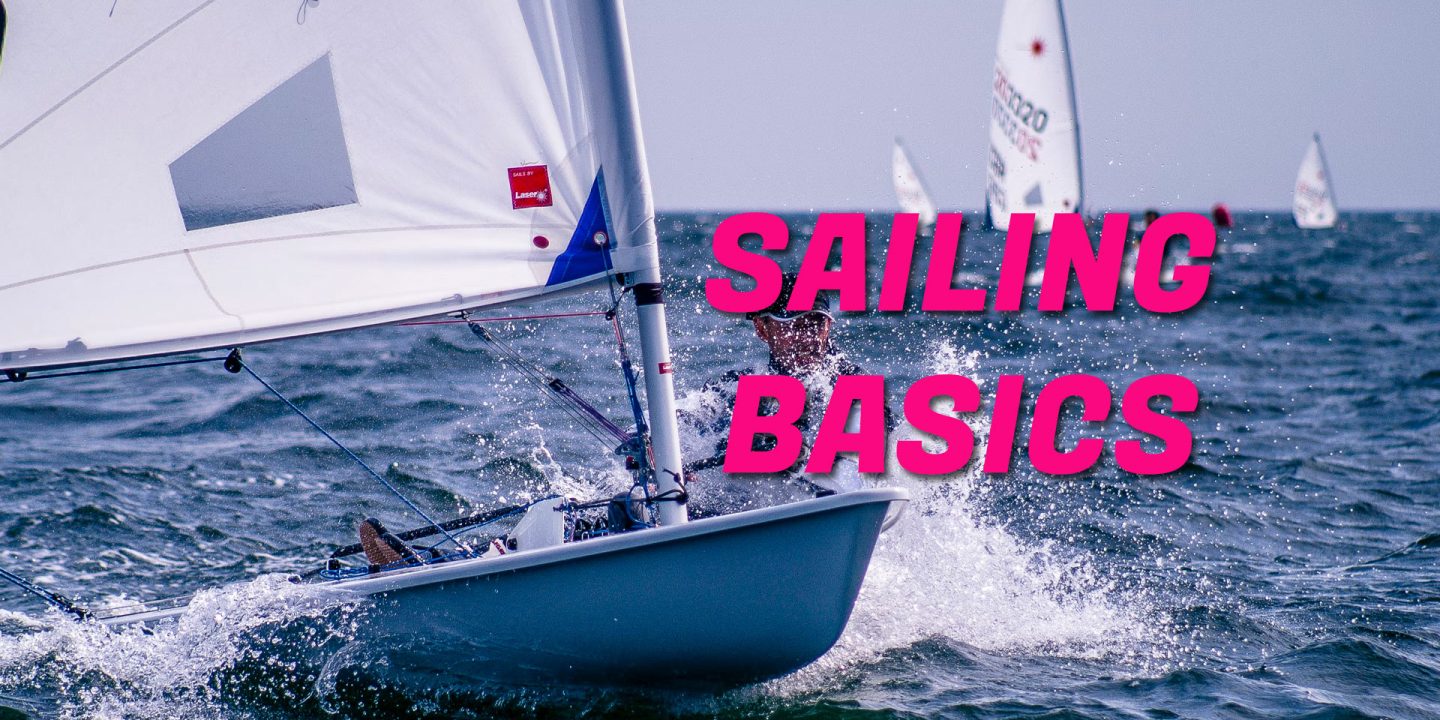
Sailing basics
The sailing basics brief will introduce new sailors to the sport of sailing. It will cover topics such as the different types of boats, sails, rigging, and basic sailing techniques. This brief will also touch on some of the more important safety aspects of sailing. By the end of this brief, new sailors should have a good understanding of the basics of sailing and be able to safely enjoy this wonderful sport.
Sailing is a wonderful sport that can be enjoyed by people of all ages and skill levels. Whether you’re looking to relax on a beautiful day out on the water, or you’re seeking an adrenaline-pumping adventure, sailing has something to offer everyone.
Sailing and why is it so special?
Sailing is a unique and special sport for a number of reasons.
First, it’s one of the few sports that can be enjoyed in a variety of different ways. You can sail alone, or with friends and family. You can sail for leisure, or you can race competitively. No matter what your interests are, there’s a way to enjoy sailing.
Another great thing about sailing is that it can be enjoyed in some of the most beautiful locations in the world. Whether you’re sailing on a lake, river, or ocean, you’ll be surrounded by stunning views. And, if you’re lucky enough to sail in a place with warm weather and clear blue waters, you’ll have an unforgettable experience.
Finally, sailing is a great way to get exercise and fresh air. There’s nothing like being out on the open water, feeling the wind in your hair, and getting some sun. And, since sailing requires both physical and mental effort, it’s a great way to keep your mind and body sharp.
Whether you’re a seasoned sailor or you’ve never set foot on a boat, we hope this introduction to sailing has got you excited about the sport. In the next section, we’ll take a look at the different types of boats and sails so you can choose the right equipment for your needs.
The different types of boats and sails
There are two main types of boats that people sail: dinghies and keelboats. Dinghies are small, lightweight boats that can be sailed solo or with a crew of two or three people. Keelboats are larger boats that require a crew of four or more people.
There are also different types of sails that can be used on both dinghies and keelboats. The most common type of sail is the mainsail, which is attached to the mast in the middle of the boat. The mainsail is the largest sail on the boat and is what catches the most wind, making the boat go faster.
There are also smaller sails called jibs and spinnakers that are located at the front of the boat. Jibs help to steer the boat, while spinnakers are used when sailing downwind and help the boat go faster.
Now that you know a little bit about the different types of boats and sails, it’s time to choose the right equipment for your needs. In the next section, we’ll take a look at how to rig your boat so you can get out on the water and start sailing!
Rigging your boat – step by step instructions
- Start by putting on your life jacket. This is the most important piece of safety equipment, so make sure it fits properly and is securely fastened.
- Next, attach the mainsail to the mast. The mainsail is the largest sail on the boat, and it’s what catches the most wind, making the boat go faster.
- Then, attach the jib to the bow of the boat. The jib helps to steer the boat.
- Finally, attach the spinnaker to the back of the boat. The spinnaker is used when sailing downwind and helps the boat go faster.
- Once everything is rigged, you’re ready to start sailing! Be sure to take some time to practice in a safe area before venturing out into open water.
The Sailing techniques
There are a few basic sailing techniques that you need to know in order to sail your boat safely and effectively.
First, you need to be able to control the sails. This means knowing how to adjust the angle of the sails so that they catch the wind properly. You also need to know how to trim the sails, which means adjusting the tension on the lines that hold the sails in place.
Another important sailing technique is called tacking. Tacking is when you turn the boat into the wind so that the sails fill with air and the boat starts moving forward. Tacking is a bit tricky to master, but it’s essential for being able to sail upwind.
Finally, you need to know how to dock the boat. This means knowing how to tie up the boat so that it doesn’t float away. There are a few different knots that you can use for this, and it’s important to know which one to use for different situations.
The Sailing safety
Sailing is a great way to spend time on the water, but it’s important to be safe while you’re doing it. There are a few basic safety rules that you should always follow when you’re sailing:
- Always wear a life jacket. This is the most important piece of safety equipment, so make sure it fits properly and is securely fastened.
- Don’t sail alone. It’s always best to have someone with you in case of an emergency.
- Be aware of the weather conditions. Before you set sail, check the forecast to make sure the weather is safe for sailing.
- Stay within your skill level. Don’t try to sail in conditions that are too challenging for you.
- Have a float plan. Let someone know where you’re going and when you’ll be back, so they can call for help if you don’t return on time.
By following these basic safety rules, you can help ensure that your time sailing is safe and enjoyable.
Getting started in sailing
If you’re interested in getting started in sailing, there are a few things you need to do. First, you need to find a place to sail. There are many different types of sailing venues, from open water to inland lakes and rivers. You can also sail at different times of the year, depending on the weather conditions in your area.
Next, you need to choose the right boat for you. There are many different types of boats available, from small dinghies to large keelboats. It’s important to choose a boat that’s comfortable for you and that meets your sailing needs.
Finally, you need to get some basic sailing equipment. This includes items like life jackets, flares, and a first-aid kit. You may also want to consider taking a sailing course so that you can learn the basics of sailing before you get out on the water.
By following these steps, you can be sure that you’re prepared for your first time sailing.
The ABCs of sailing – a beginner’s guide
If you’re new to sailing, it can seem like a daunting task. There are so many different terms and concepts to learn, and it can be difficult to know where to start. But don’t worry – we’re here to help! In this section, we’ll go over the basics of sailing, from A to Z.
- A is for anchor. The anchor is used to keep the boat in place.
- B is for boom. The boom is a horizontal beam that extends from the mast. It’s used to hold the sails in place.
- C is for clew. The clew is the lower corner of a sail.
- D is for daggerboard. The daggerboard is a removable board that’s used to help stabilize the boat.
- E is for port. Port is the left side of the boat when you’re facing forward.
- F is for starboard. Starboard is the right side of the boat when you’re facing forward.
- G is for gunwale. The gunwale is the upper edge of the boat’s hull.
- H is for halyard. The halyard is a rope that’s used to raise and lower the sails.
- I is for keel. The keel is a long, vertical beam that helps to stabilize the boat.
- J is for jib. The jib is a sail that’s located at the front of the boat.
- K is for ketch. A ketch is a type of sailing vessel that has two masts.
- L is for leeward. Leeward is the direction that the wind is blowing from.
- M is for mast. The mast is a tall, vertical pole that supports the sails.
- N is for nose-to-wind sailing. Nose-to-wind sailing is when the front of the boat is pointing into the wind.
- O is for outhaul. The outhaul is a rope that’s used to adjust the tension on the boom.
- P is for pennant. A pennant is a long, narrow flag that’s flown from the mast.
- Q is for quarterdeck. The quarterdeck is the raised deck at the stern of the boat.
- R is for rudder. The rudder is a large, flat board that’s used to steer the boat.
- S is for sheet. A sheet is a rope that’s used to control the sails.
- T is for tiller. The tiller is a long pole that’s attached to the rudder. It’s used to steer the boat.
- U is for upwind sailing. Upwind sailing is when the wind is blowing from behind the boat.
- V is for ventilator. A ventilator is a device that’s used to let air circulate below deck.
- W is for weather helm. Weather helm is when the boat tends to turn into the wind.
- X is for xebec. A xebec is a type of sailing vessel that has three masts.
- Y is for yard. The yard is a horizontal beam that’s attached to the mast. It’s used to support the sails.
- Z is for zone of silence. The zone of silence is the area around the boat where there is no wind.
Top 10 tips for new sailors
If you’re new to sailing, it can be a bit overwhelming. There are so many different terms and concepts to learn, and it can be difficult to know where to start. But don’t worry – we’re here to help! In this section, we’ll go over the top 10 tips for new sailors.
- Get some basic sailing equipment. This includes items like life jackets, flares, and a first-aid kit. You may also want to consider taking a sailing course so that you can learn the basics of sailing before you get out on the water.
- Choose the right boat for you. There are many different types of boats available, from small dinghies to large yachts. It’s important to choose a boat that’s the right size for you and that has the features you need.
- Familiarize yourself with the boat’s controls. Before you set sail, take some time to familiarize yourself with the boat’s controls. This includes items like the sails, the rudder, and the throttle.
- Get to know the local waterways. When you’re planning your sailing trip, be sure to research the local waterways. This will help you avoid any potential hazards, such as shallow areas or strong currents.
- Make a float plan. A float plan is simply a plan of where you’re going and when you plan to return. Be sure to share your float plan with a friend or family member so that they know where you are in case of an emergency.
- Check the weather forecast. Before you set sail, be sure to check the local weather forecast. This will help you avoid bad weather conditions, such as strong winds or thunderstorms.
- Dress for success. When you’re sailing, it’s important to dress for the occasion. Wear clothes that are comfortable and that won’t get in the way if you need to move around on the boat.
- Stay hydrated. It’s important to stay hydrated when you’re sailing, especially in hot weather. Be sure to bring plenty of water onboard so that you can stay hydrated throughout the day.
- Use common sense. When you’re sailing, it’s important to use common sense and good judgment. If something doesn’t feel right, or if you’re not sure about something, don’t hesitate to ask an experienced sailor for help.
- Have fun! Sailing is a great way to relax and enjoy the outdoors. So, be sure to take some time to sit back, relax, and enjoy the ride.









One reply on “Getting started in sailing – The sailing basics”
кипр таунхаус купить [url=http://www.doma-a-dom.ru/]http://www.doma-a-dom.ru/[/url].